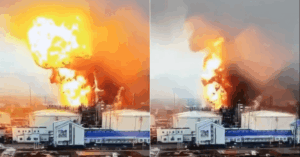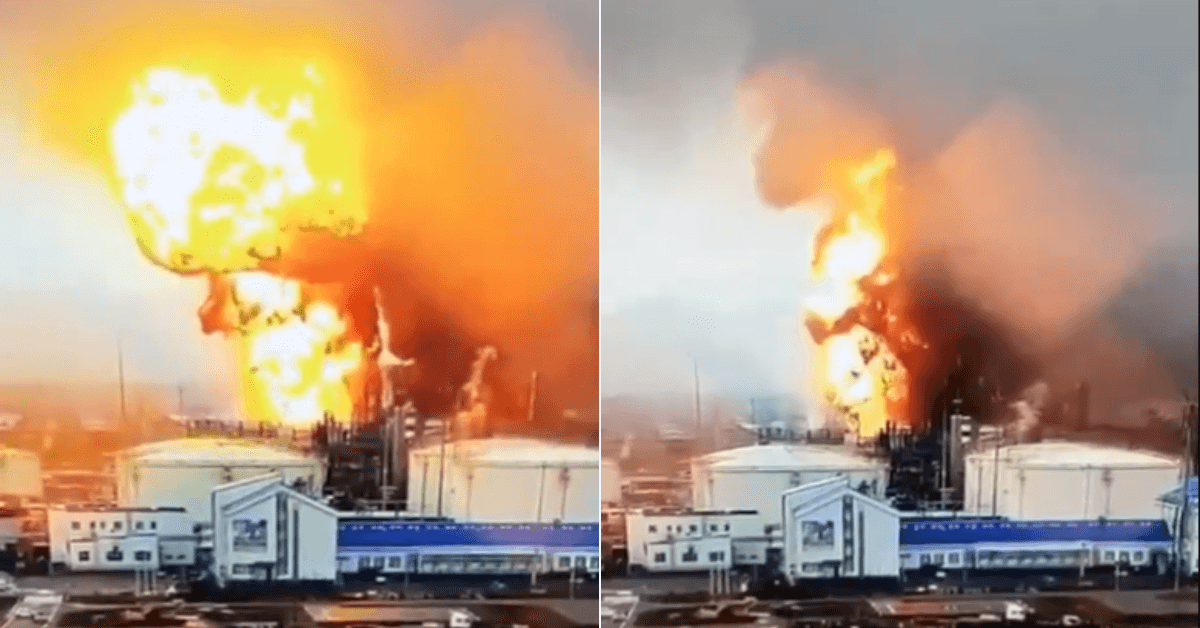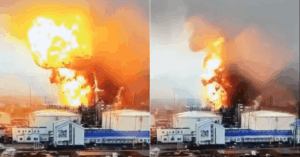
Ghana Passes Landmark Fisheries Law To Tackle Illegal Fishing & Protect Livelihoods
August 25, 2025
World’s First CO₂ Transport & Storage Facility Begins Operations In Norway
August 26, 2025

In one of its largest drone attacks since the war began, Ukraine has targeted the Ust-Luga fuel export terminal on the Baltic Sea, the Syzran oil refinery in the Samara region, and damaged equipment at the Kursk nuclear power plant on August 23-24.
Ukraine’s General Staff said Special Operations Forces and the Security Service of Ukraine (SBU) coordinated long-range drone strikes on the Ust-Luga terminal, a critical hub for Russia’s oil and gas exports.
The port, operated by Novatek since 2013, handles more than 7 million tonnes of gas condensate and over 4 million tonnes of oil products every year, including marine and jet fuel, kerosene, and diesel.
Russian officials confirmed that at least 10 drones targeted the facility. Leningrad region governor Alexander Drozdenko reported that air defenses destroyed the drones, but debris caused a fire at the Novatek terminal. He urged citizens to avoid industrial zones and public places during the attacks. By Sunday afternoon, the fire was brought under control and put out, with no casualties reported. Novatek has begun repair and restoration work.
Local reports said gas processing equipment was damaged, forcing parts of the plant offline. Analysts said repairs could take months.
Attaque de drones sur un port stratégique de la Fédération de Russie / Des drones ont frappé le deuxième plus grand port maritime de Russie Ust-Luga, dans la région de Leningrad. Ainsi qu’une raffinerie dans la région de Samara. pic.twitter.com/jpYocEfJc4
— RU/UK (@Uk_Eu_Ru) August 24, 2025
At the same time, Ukrainian drones hit the Rosneft-owned Syzran oil refinery in the Samara region. The refinery accounts for about 3% of Russia’s refining capacity and produces gasoline, diesel, aviation kerosene, and other fuels for both civilian use and the Russian armed forces.
Regional officials reported fires and detonations at the refinery, and one child was said to have been injured in the attack. Ukrainian sources claimed the strike forced the refinery to suspend crude intake and production.
In a separate strike, a drone detonated near the Kursk nuclear power plant, about 60 kilometers from Ukraine’s border. Russian authorities said the explosion damaged an auxiliary transformer, sparking a fire and forcing reactor No. 3 to reduce power output by half. Two other reactors at the plant are running without power generation, while one unit is undergoing maintenance.
Russia’s defense ministry reported that air defenses intercepted 95 Ukrainian drones across 14 regions during the assault. It admitted that drones were destroyed over Ust-Luga and Kursk but confirmed minor damage at both sites. Officials also said a nuclear facility was hit, though no dangerous radiation leaks occurred.
The Ust-Luga port in Russia’s Leningrad Oblast came under drone assault on the morning of 24 August.
This port processes fuel used by Russian military forces.
It serves as a crucial hub for Russia to bypass Western sanctions while exporting oil, gas, and coal that generate… pic.twitter.com/H0mEc1ZwFt— Euromaidan Press (@EuromaidanPress) August 24, 2025
The large-scale strike disrupted civilian life across several regions.
The Novoshakhtinsky refinery in the Rostov region has been burning for several days since it was hit on August 21. The Olya port in Astrakhan has been closed for more than a week after being struck on August 15.
Ukraine has also attacked the Unecha pumping station on the Druzhba oil pipeline, a key route supplying crude to Europe, and multiple logistics depots in Belgorod and Voronezh.
Experts warned that repeated drone attacks could cause lasting damage to Russia’s refining sector. At least seven major plants have been hit this summer, and repairs are harder because Western sanctions have cut off access to U.S. and European parts used in the original refinery designs.
Reference: Reuters
Source: Maritime Shipping News


